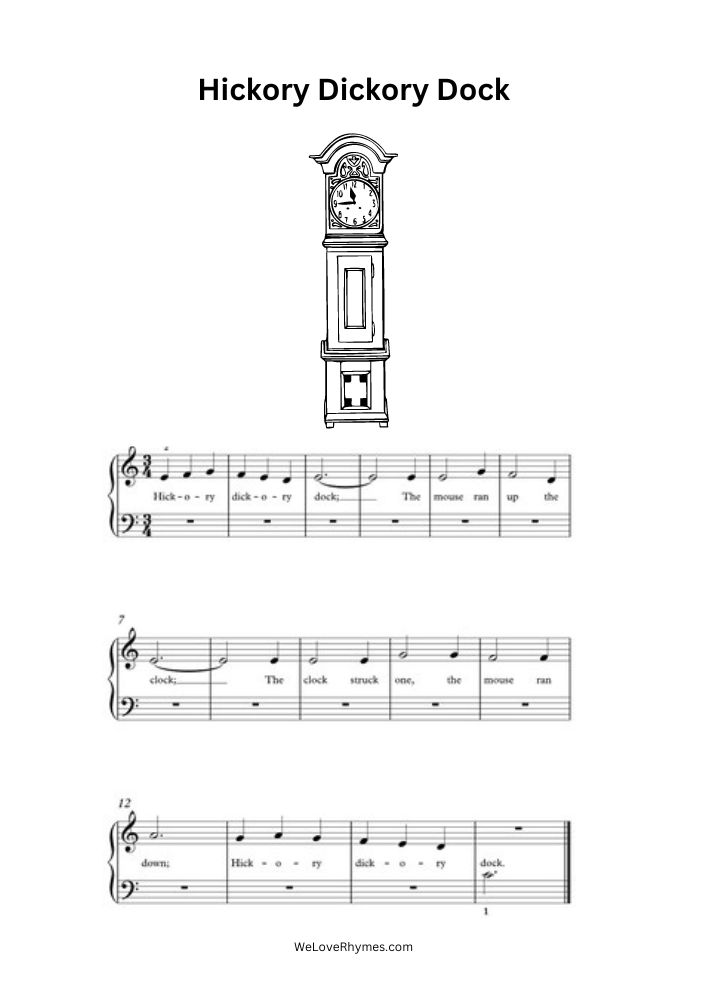Like many poems and nursery rhymes, Hickory Dickory Dock tries to imitate a particular sound, in this case the ticking of a clock. It was used in the 18th and 19th century extensively by children to decide who would start a game.
It was first published in 1744 under the name of “Hickere, Dickere Dock”, while 21 years later in 1765 it was published in Mother Goose’s Melody under the name of Dickery, Dickery Dock. It may have been originally a counting-out rhyme as the words Hickery, Dickery and Dock closely resemble the numbers 8, 9, and 10 in Cumbric (Hevera for 8, Devera for 9, and Dick for 10), the same numbering system that is speculated to be the foundation of Eenie Meenie Miney Mo.
It is also imagined that when the shepherds came home from a hard day’s work, they often put their children to sleep by “counting sheep” with the same rhyme.
Putting children to sleep at night is a very important part of the day, hearing a parent’s voice and knowing they are nearby; whatever words come out with a rhythmic tone can be comforting and reassuring.
Children often repeat the words they hear their parents say, which could explain some of the silliest variations of this nursery rhyme. Rhyming is fun and can make us laugh for hours with our friends. Some variations:
“Ziccoty diccotty dock” (Blackwoods’ Edinburgh Magazine, 1821)
“The moose ran up the clock” (northeast Scotland 1881)
“Ickity, Pickety pock”( Shropshire 1883)
Hickory Dickory Dock was a favorite poem of Sir Walter Scott who used to recite it to Marjorie Fleming, the diarist.
Hickory Dickory Dock Lyrics
Hickory, dickory, dock,
The mouse ran up the clock.
The clock struck one,
The mouse ran down!
Hickory, dickory, dock.
Hickory Dickory Dock Music Sheet




